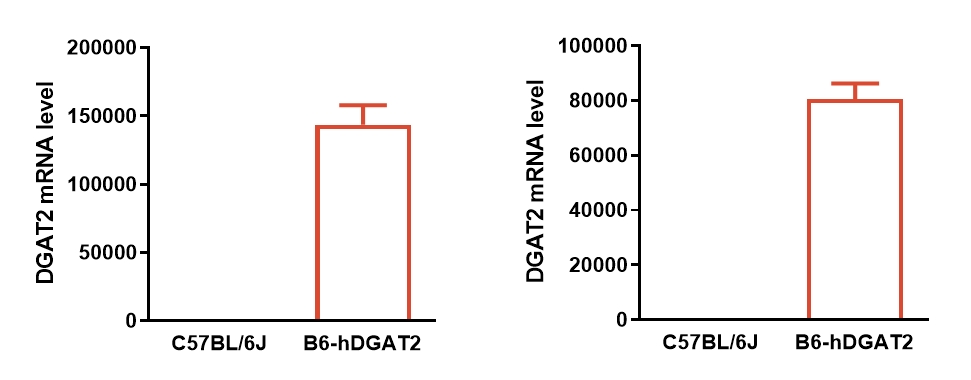Metabolic dysfunction-associated liver disease (MAFLD) affects about 25% of the global population, and is characterized by excessive accumulation of intrahepatic lipids, especially triglycerides (steatosis). A progressive subtype of the disease, metabolic dysfunction-associated steatohepatitis (MASH), is characterized by cellular injury and inflammation, further deterioration can develop into cirrhosis and even liver cancer. DGAT2 (Diacylglycerol acyltransferase 2) is mainly expressed in the liver and as a rate-limiting enzyme for de novo synthesis of triglycerides. Overexpression of DGAT2 may lead to increased accumulation of triglycerides in the liver and thus accelerate the progression of MAFLD. Although the exact molecular mechanism of MASH progression remains unclear, it has been reported that fat accumulation may be a major driving factor in the development of the disease, suggesting that DGAT2 may be an important target for targeted MASH therapy.
GemPharmatech has produced a transgenic humanized DGAT2 mouse model carrying the human ApoE promoter, DGAT2 cDNA and LE1 element. This strain expresses human DGAT2, which make it an ideal model for the development of drugs against metabolic diseases such as MAFLD and MASH.
Data of B6-hDGAT2-Tg
1. Quantification of hDGAT2 mRNA levels

Fig 1. Human DGAT2 is expressed in the liver tissues of B6-hAPOE-DGAT2-LE1 mice. On the left is generation F1 (B6, n=3, 1 male, 2 females; B6-hAPOE-DGAT2-LE1, n=4 females; on the right is the generation N2 (B6, n=6, 3 males and 3 females; B6-hAPOE-DGAT2-LE1, n=6, 3 males and 3 females).
2. Quantification of TG levels in plasma and liver

Fig 2. The plasma TG (left) in B6-hAPOE-DGAT2-LE1 mice is significantly decreased and the hepatic TG (right) is significantly increased compared with C57BL/6J control. (n=6 females, 6 weeks; B6-hAPOE-DGAT2-LE1, n=7 females, 7-16 weeks).

